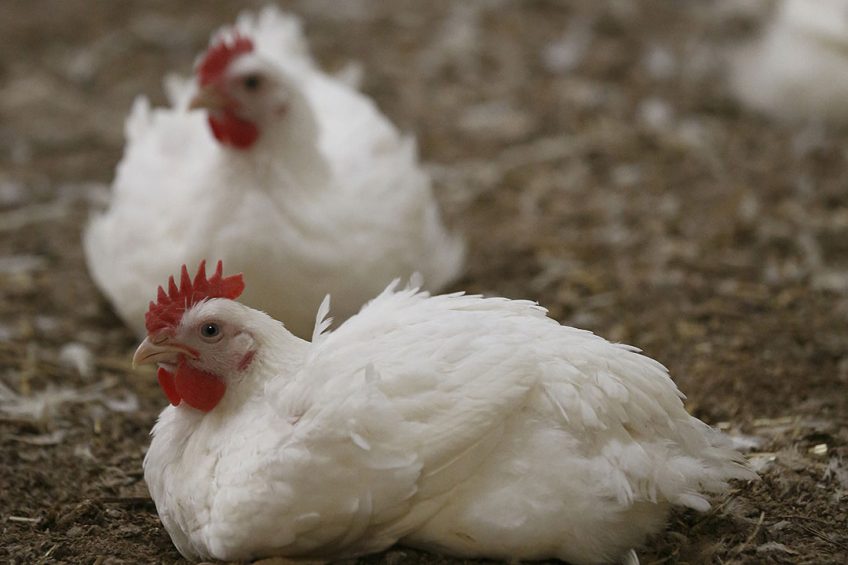Case Study: Chicken finds its way onto more Chinese plates

China’s chicken meat production and consumption will continue to grow in 2021, but at a slower pace than 2019.
China’s 2021 chicken meat production is forecast at 15.3 million mt, which is a 3% increase from the estimated 14.9 million mt in 2020. With the outbreak of African Swine Fever (ASF) across China in 2018, a large protein deficit emerged, making room for expansion by China’s poultry industry (18% and 8% growth in 2019 and 2020, respectively). As China’s swine herd and pork supply recover, poultry prices have weakened, slowing poultry industry expansion. With an almost complete recovery of the pork sector expected by the end of 2021, analysts believe China’s chicken meat production will also return to more traditional growth patterns.
The effect of Covid-19 and HPAI
Covid-19 caused an increase in take-out, delivery, and home-prepared meals as a result of the closure of restaurants, schools, canteens, and other food processing factories. There was, nonetheless, an overall drop in demand for chicken meat. According to the National Statistics Bureau, China’s poultry meat output (all poultry) in the first quarter of 2020 was 5.23 million tonnes, which is an increase of 1.1% from the same period of 2019. This is much lower than the expected rate of increase. Avian influenza does not appear to have affected poultry production in 2020. Since 1 January 2020, 6 highly pathogenic avian influenza (HPAI) outbreaks were reported.
 Covid-19 Up-date
Covid-19 Up-date
What impact is the pandemic having on the global poultry sector and how are they dealing with it.
White-feathered vs yellow-feathered
White-feather broilers account for 50% of China’s total chicken meat production, yellow-feather broilers account for 32%, hybrid chickens (also known as 817 chickens) 10%, and ex-layers 8%.
- White-feathered broiler production is expected to continue increasing in 2021 due to recent large investments in poultry production, which will add significant capacity. For example, in Fujian Province, a large poultry group broke ground on 17 new white broiler facilities in April 2020. Factories, canteens, and fast food restaurants are the primary outlets for white-feathered birds.
- Yellow-feathered broilers are diverse in species, price, and breeding cycles (fast, medium and slow growth chickens). These broilers come from an indigenous species, and because their genetics can be domestically produced, grandparent and parent yellow-feathered chickens are much cheaper than those of the white-feathered variety. Live bird markets and wholesale wet markets are the primary retail outlets for yellow-feathered birds. Since January 2020, many live bird markets have been closed due to Covid-19 concerns.
- Hybrid chickens (also known as “817 chicken”) is a unique Chinese variety originating from Shandong Province and was primarily bred to supply the processed chicken industry. The 817 chicken, which was developed as a cross between a male white-feather parent and a female commercial layer chicken, grows quickly so the production costs are almost 50% that of white broilers. As a result, hybrid chicken production and utilisation has expanded rapidly.
- Spend layers are frequently sold in a similar manner to yellow-feather broilers and are valued for use in making soups and stews – Chinese consumers believe their longer life span results in more flavourful chicken. The layer’s lifecycle is about 18 months, at which point they are culled and sold as spent hens in markets. The use of layers is expected to remain stable.
More chicken on the plate
Chicken meat consumption in China is forecast to increase to 15.7 million mt in 2021, representing a 2% year-on-year increase, with the 2 primary factors being pork prices and Covid-19. Pork consumption dropped in 2019 as prices reached record highs and many consumers switched to chicken meat as a cheaper alternative, driving a 20% year-over-year increase in consumption. As the swine herd recovers and pork prices decrease, the growth in chicken meat consumption will slow, but remain above pre-ASF levels.
![]() Global poultry industry case studies
Global poultry industry case studies
Taking a deeper look into poultry production worldwide
A surge in imports in 2020
Imports of chicken meat are forecast to decrease 16% to 775,000 mt in 2021, primarily due to the decreasing domestic poultry price. It is worth noting that this is still double the average level prior to the ASF outbreak in China. According to China’s Customs, China’s chicken meat imports amounted to 358,600 mt from January to May 2020, which is a 76% increase over the same period last year. The industry believes that imports in the second half of 2020 will be constrained due to existing high stocks of imported product, abundant domestic production, and sluggish market demand due to lingering Covid-19 restrictions (e.g. prohibitions on restaurant capacity).
 Large Brazilian investment to cater for Chinese demand
Large Brazilian investment to cater for Chinese demand
The Brazilian brand AveNutri has announced an investment of € 62.5 million in a new poultry processing plant at Vista Gaúcha city, in Rio Grande do Sul state.
Brazil will continue to be China’s leading supplier in 2021, although its market share is expected to decline with increased access granted to its competitors. In 2019, chicken meat imports from Brazil accounted for 72% of China’s total imports. After being banned from the Chinese poultry market for 5 years, US-origin chicken imports increased rapidly after access was restored in November 2019. From January to May 2020, China became the third largest export destination for US chicken meat after Mexico and Taiwan.
China focuses on increasing exports
China’s 2021 chicken meat exports are forecast at 420,000 mt, which is a 12% increase from the estimated 375,000 mt in 2020. As China’s domestic production continues to increase, but demand slows, Chinese industry will focus on increasing exports. In the first 5 months of 2020, China’s chicken meat exports reportedly declined 12%. China’s primary export markets are Japan and Hong Kong, together accounting for about 80% of China’s total chicken meat exports.
The information herein is based on a USDA GAIN report prepared by Abraham Inouye












